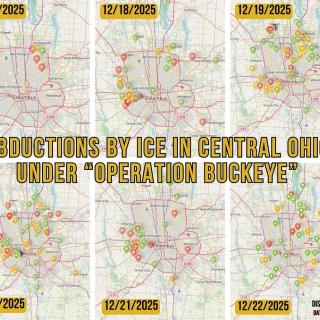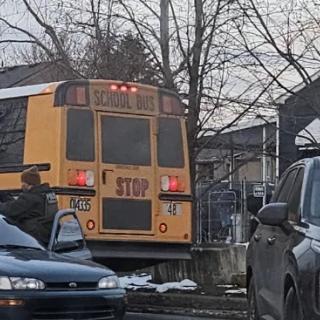Advertisement
Did President Obama anger so many conservative white Ohioans that they overwhelmed the ballot box, giving the Ohio Republican Party a decade of dominance at both the state and congressional levels?
Or, as some election experts believe, did the GOP’s ten-year supermajority in Ohio and in other states result from a calculated top-down gerrymandering strategy by Karl Rove and John Boehner?
In 2011, Ohio Republicans schemed in secrecy for three months, with direct input from Boehner, to redraw both state legislative and Congressional maps, says Katy Shanahan, Ohio director of All On the Line, a national grassroots org created to end partisan gerrymandering.
They chose their voters while also squeezing in pro-GOP corporations to maximize campaign contributions. All done in what Ohio Republicans at the time called “the bunker” – a non-descript, soulless downtown Columbus hotel room with privately-controlled access so to easily slam the door in the public’s face.
“This was a direct cause of gerrymandering,” says Shanahan about the current GOP supermajority in Ohio. “Across the decade, just like at the Congressional level, Republicans have only won 55 percent of the statewide total vote share for state legislative races, yet they hold 75 percent of our state Senate seats and 65 percent of our state House seats. That is a direct result of gerrymandering [because] the maps are performing exactly how they are supposed to perform, which is giving Republican’s supermajorities in each, but they just are not actually winning at the ballot box.”
As many are aware, final deadlines to redraw both state legislative and Congressional maps are fast approaching, which must be done every 10 years, as mandated by the Ohio Constitution.
State districts (33 Senate and 99 House) are due September 1, but could be pushed until September 15, and Congressional districts (dropping to 15 in 2022) due by September 30 with a final deadline of November 30.
Making the situation more complicated for the public is how the General Assembly is redrawing the Congressional districts, but if the two parties can’t come to an agreement, which is almost a certainty, then the Ohio Redistricting Commission will finish the job.
This is the make-up of the Ohio Redistricting Commission: Gov. Mike DeWine (R), Secretary of State Frank LaRose (R), State Auditor Keith Faber (R), Senate President Matt Huffman (R), House Speaker Bob Cupp (R), House Minority Leader Emilia Sykes (D) and Sen. Vernon Sykes (D).
It’s heavy GOP, surprise, surprise.
The pandemic and a US Census Bureau data delay – data necessary to redraw the maps – are apparently what’s brought the Ohio Redistricting Commission and the entire state for that matter to the very edge of the deadline cliff. Which is beyond disconcerting for Ohio Democrats because re-mapping Ohio is a “monumental task that takes a very long time and should not be rushed,” says Shanahan.
“We have been asking since January for Governor DeWine to actually convene the commission and to get to work,” she says. “But the deadlines are what they are.”
Partisan gerrymandering is not exclusive to the Ohio GOP. The Ohio Dems, many eons ago, are also guilty, holding the re-districting power pen in 1971 and 1981. Thus both parties have a history of rigging elections, albeit in plain sight and sanctioned by law.
In 2015, many Ohio voters apparently agreed on something and overwhelming approved Issue 1, The Ohio Bipartisan Redistricting Commission Amendment, which increased minority party representation. But it was far from perfect.
“I think it’s a little unfair to put it only on two Democrats shoulders to get this process right,” said Shanahan. “The onus lies on every one of those commissioners. The Republicans also have a responsibility and a duty to draw maps that are actually reflective and representative of Ohio.”
The first deadline is just two days away. The good news, both Caucuses have aides and others helping with the re-mapping process. And the two Dems on the commission are tested, and also father and daughter.
Emilia Sykes is Ohio House Minority Leader, voted in by her colleagues. State Sen. Vernon Sykes was put on the commission, states a press release, because he’s a “longtime advocate for redistricting reform…Sykes championed for the redistricting of Ohio’s state legislative and Congressional districts to give Ohioans more choices, better reflecting their needs at the Statehouse and in Congress.”
“After working on this issue for more than a decade, I’m ready to finally have fair maps that respect all Ohioans – not benefit a political party,” said Vernon Sykes in the same press release. “Voters approved this new system because they wanted to have openness and transparency.”
Truly mindboggling for 2021 is how historical it is to have the Sykes on this commission. It’s also beyond unfortunate and embarrassing for white Ohio, because this exposes Ohio’s not-to-distant – and ongoing – Jim Crow past. Last year both were threatened anonymously by someone police said had a southern sounding voice. Leader Sykes has also been stopped by Ohio Capital police because she didn’t “look like a legislator.”
“It’s important to note,” says Shanahan, “that having Senator Sykes and Leader Sykes on that commission marks the first time in history that there are two Black members on the map drawing body, which is a very long overdue historical mark. It’s great to see we are finally there.”
The Free Press reached out to Leader Sykes but have not heard back. Last week Vernon Sykes told Cleveland.com that while both Caucuses are developing maps within their own parties, ideas have not been exchanged across the aisle.
Re-districting is a once-a-decade, contentious process, and in 2021, arguably taking place during some of Ohio’s most challenging times.
Activists recommend the book Ratf**ked: Why Your Vote Doesn't Count (you read the title correctly), to fully understand what happened during the 2011 Ohio redistricting process. The book documents how Republicans in 2011 implemented “Project REDMAP” or Redistricting Majority Project across the nation.



